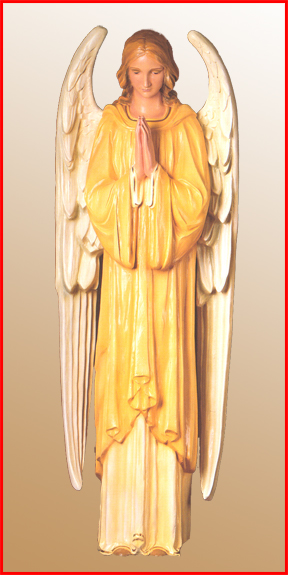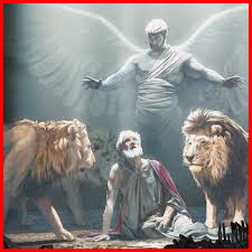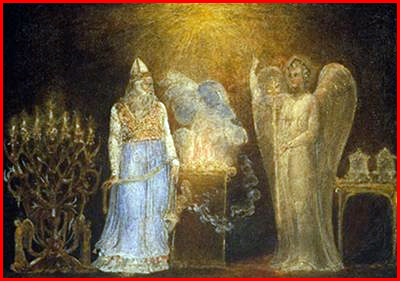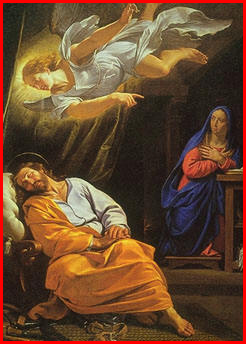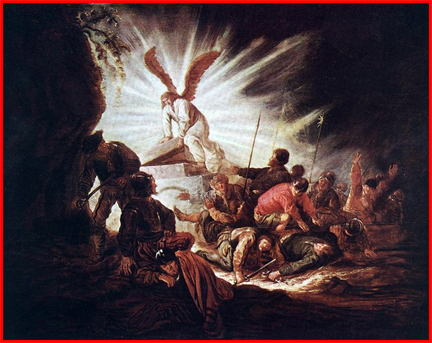| Devotion to Our Lady |
|
- Homepage
-
Daily Thoughts
- 2023 October Daily Thoughts
- Daily Thoughts Lent 2020
- Daily Thoughts for Advent 2019
- Daily Thoughts for October 2019
- Daily Thoughts for September 2019
- Daily Thoughts for August 2019
- Daily Thoughts for July
- Daily Thoughts for June
- Daily Thoughts for Easter 2019
- Daily Thoughts for Lent 2019
- Daily Thoughts for Christmas
- Daily Thoughts Easter 2022
- Sacred Heart
- Holy Ghost
-
Spiritual Life
- Holy Mass Explained
- First Friday Devotions
- First Saturday Devotions
- The Mercy of God
- Vocations
- The Path Everyone Must Walk >
- Gift of Failure
- Halloween or Hell-O-Ween?
- Ignatian Spiritual Exercises >
- Meditation is Soul-Saving
- Spiritual Communion
- Miraculous Medal
- Enrollment in Miraculous Medal
- St. Benedict Medal
- Holy Water
- Advice on Prayer
- Your Daily Mary
-
Prayers
- September Devotions
- Seven Sorrows of Our Lady
-
Novenas
>
- NV-Help of Christians
- NV-Nativity of Our Lady
- NV-Seven Sorrows
- NV- Sorrowful Heart
- NV-Pope St Pius X
- NV-La Salette
- NV-St Michael Archangel
- NV-Immaculate Heart
- NV-Assumption
- NV-Novena for Fathers
- NV-Novena for Your Mother
- NV-St Raphael Archangel
- NV-Souls in Purgatory
- NV-All Saints Day
- NV-Christ the King
- NV-Divine Motherhood
- NV-Guardian Angels
- NV-Rosary
- NV-Mirac Med
- NV- Imm Conc
- NV - Guadalupe
- NV - Nativity of Jesus
- NV-Epiphany
- NV-OL Good Success
- NV-Lourdes
- NV-St Patrick
- NV-St Joseph
- NV-Annunciation
- NV-St Louis de Montfort
- NV-OL Good Counsel
- NV-Last Supper
- NV-Passion
- NV-Pentecost
- NV-Ascension
- NV-Sacred Heart
- NV-Sacred Heart & Perpetual Help
- NV-Corpus Christi
- NV-OL of Perpetual Help
- NV-Queenship BVM
- NV-OL of Mount Carmel
- NV-St Mary Magdalen
- NV- Im Hrt
- August Devotions to IHM
- Immaculate Heart of Mary
- Litany of Dependence
- Prayers to St Mary Magdalen
- Prayers in Times of Sickness Disease & Danger
- Holy Souls in Purgatory
- Meditations on the Litany of Our Lady
- Special Feast Days
- Prayers to Mary (Mon-Sun)
- Litanies to Our Lady >
- Various & Special Needs
- Our Lady of the Rosary
- Our Lady of Mt. Carmel
- Our Lady of Perpetual Help
- Our Lady of Guadalupe
- Other titles of Our Lady
-
Rosary
- Downloads
- Consecration
- Easter Season
-
Holy Week
- Last Seven Words of Jesus >
- Characters of Passion >
- The Last Days of Christ
- Before Palm Sunday
- Palm Sunday
- Monday in Holy Week
- Tuesday in Holy Week
- Wednesday in Holy Week
- Holy Thursday (Last Supper)
- Holy Thursday (Agony & Arrest)
- Night Vigil with Christ
- Good Friday (Pilate & Herod)
- Good Friday (Way of Cross & Crucifixion)
- Saturday in Holy Week
-
Lent
- Ideas for Lent
- Daily Lenten Planner
- Daily Lenten Liturgy
- From Cold to Hot
- Lent with Aquinas
- Lent with Dom Gueranger
- Virtues for Lent
- History of Penance
- How Expensive is Sin?
- Confession of Sins
- Letter to Friends of the Cross
- Sermons for Lent
- Stations of the Cross >
- Lenten Prayers
- 7 Penitential Psalms
- Lenten Psalms SUN
- Lenten Psalms MON
- Lenten Psalms TUE
- Lenten Psalms WED
- Lenten Psalms THU
- Lenten Psalms FRI
- Lenten Psalms SAT
- Lenten Laughs
- Septuagesima
-
Christmas
- Epiphany Explained
- Suggestions for Christmas
- Food For Thought
- Christmas with Aquinas
- Christmas with Dom Gueranger
- Christmas Prayers
- Candles & Candlemas
- Christmas Sermons
- Christmas Prayers SUN
- Christmas Prayers MON
- Christmas Prayers TUE
- Christmas Prayers WED
- Christmas Prayers THU
- Christmas Prayers FRI
- Christmas Prayers SAT
- Twelve Days of Christmas >
-
Advent Journey
- Purgatory
- Christ the King
- Legion of Mary
- Scapular
-
Saints
-
Martyrs for the Faith
>
- Your Daily Martyr >
- All 365 Days of Martyrs
- Cristeros
- St Valentine & Valentine's Day
- Martyrs--Thomas Becket
- Martyrs--John the Apostle
- Holy Machabees
- Age of Martyrdom
- Carmelites of Compiegne
- Martyrs--Peter & Paul
- Martyrs--John the Baptist
- Martyrs--Andrew
- Martyrs--James the Great
- Martyrs--North American
- Martyrs--Seven Holy Sleepers
- Martyrs--Afra
- School of Martyrdom
- Martyrs--Christina
- Desert Saints >
- Saints for Sinners >
- Saints of Mary >
- History of All Saints Day
-
Martyrs for the Faith
>
- Precious Blood
- Synod 2023
-
Catechism
- Catechism Lesson 1
- Catechism Lesson 2
- Catechism Lesson 3
- Catechism Lesson 4
- Catechism Lesson 5
- Catechism Lesson 6
- Catechism Lesson 7
- Catechism Lesson 8
- Catechism Lesson 9
- Catechism Lesson 10
- Catechism Lesson 11
- Catechism Lesson 12
- Catechism Lesson 13
- Catechism Lesson 14
- Catechism Lesson 15
- Catechism Lesson 16
- Catechism Lesson 17
- Catechism Lesson 18
- Catechism Lesson 19
- Catechism Lesson 20
- Catechism Lesson 21
- Catechism Lesson 22
- Bible Study
-
Calendar
- Miracles
- Apparitions
- Shrines
- Prophecies
- Angels Homepage
- Hell
-
Church Crisis
- Conspiracy Theories
- Amazon Synod 2019 >
- Liberalism & Modernism
- Modernism--Encyclical Pascendi
- Modernism & Children
- Modernism--Documents
- The Francis Pages
- Church Enemies on Francis
- Francis Quotes
- Amoris Laetitia Critique
- Danger of Ignorance (Pius X)
- Restore all In Christ (Pius X)
- Catholic Action (Pius X)
- Another TITANIC Disaster?
- The "Errors of Russia"
- CRISIS PRAYERS
- Election Novena 2024
- The Anger Room
- War Zone
- Life of Mary
- Spiritual Gym
- Stupidity
- Coronavirus and Catholicism
- History & Facts
- Books
- Catholic Family
- Children
- Daily Quiz
-
Novena Church & Pope
- Day 01 Church-Pope Novena
- Day 02 Church-Pope Novena
- Day 03 Church-Pope Novena
- Day 04 Church-Pope Novena
- Day 05 Church-Pope Novena
- Day 06 Church-Pope Novena
- Day 07 Church-Pope Novena
- Day 08 Church-Pope Novena
- Day 09 Church-Pope Novena
- Day 10 Church-Pope Novena
- Day 11 Church-Pope Novena
- Day 12 Church-Pope Novena
- Day 13 Church-Pope Novena
- Day 14 Church-Pope Novena
- Day 15 Church-Pope Novena
- Day 16 Church-Pope Novena
- Day 17 Church-Pope Novena
- Day 18 Church-Pope Novena
- Day 19 Church-Pope Novena
- Day 20 Church-Pope Novena
- Day 21 Church-Pope Novena
- Day 22 Church-Pope Novena
- Day 23 Church-Pope Novena
- Day 24 Church-Pope Novena
- Day 25 Church-Pope Novena
- Day 26 Church-Pope Novena
- Day 27 Church-Pope Novena
- Day 28 Church-Pope Novena
- Day 29 Church-Pope Novena
- Day 30 Church-Pope Novena
- Day 31 Church-Pope Novena
- Day 32 Church-Pope Novena
- Day 33 Church-Pope Novena
- Day 34 Church-Pope Novena
- Day 35 Church-Pope Novena
- Day 36 Church-Pope Novena
- Day 37 Church-Pope Novena
- Day 38 Church-Pope Novena
- Day 39 Church-Pope Novena
- Day 40 Church-Pope Novena
- Day 41 Church-Pope Novena
- Day 42 Church-Pope Novena
- Day 43 Church-Pope Novena
- Day 44 Church-Pope Novena
- Day 45 Church-Pope Novena
- Day 46 Church-Pope Novena
- Day 47 Church-Pope Novena
- Day 48 Church-Pope Novena
- Day 49 Church-Pope Novena
- Day 50 Church-Pope Novena
- Day 51 Church-Pope Novena
- Day 52 Church-Pope Novena
- Day 53 Church-Pope Novena
- Day 54 Church-Pope Novena
- Penance Novena
- Daily WeAtheR Forecast
click on any of the links below
| Angels Homepage | St. Michael the Archangel | St. Gabriel the Archangel | St. Raphael the Archangel | The Guardian Angels | Novena to the Guardian Angels |
| Angels Homepage | St. Michael the Archangel | St. Gabriel the Archangel | St. Raphael the Archangel | The Guardian Angels | Novena to the Guardian Angels |
ST. GABRIEL THE ARCHANGEL, TEACH US ACCEPT THE WILL OF GOD!
|
The name Gabriel seems to be composed of the Hebrew words, “gebher”: man, and “‘el”: God. It means, therefore, “Man of God”, or, “Strength of God.”
He is often depicted with a spear in his right hand and a mirror of jasper with an X (the first letter of the word Christ in Greek) in his left hand. The mirror signifies the wisdom of God as a hidden mystery. According to Sacred Scripture, the archangel Gabriel is the messenger angel who appeared to people in the Old Testament and the New Testament on many different occasions. In some appearances, Gabriel is mentioned by name. On other occasions, Gabriel is thought to be the unnamed angel who appeared and made announcements to Moses, to Saints Joachim and Anne, to the shepherds at Jesus’ birth, to the myrrh bearing women approaching Jesus’ tomb, and to Jesus in the Garden of Gethsemane to strengthen him. It is said that: Gabriel taught the Prophet Moses in the wilderness in order to write the Book of Genesis. ● He revealed the coming of the Savior to the Prophet Daniel (Daniel 8:15-26 and 9:21-27.) ● He revealed to Saints Joachim and Anne the conception of the Virgin Mary. ● He appeared to Zachariah to announce the birth of St. John the Baptist. (Luke 1:10-20) ● In Gabriel’s best known and most celebrated appearance, he announced to Mary that she would bear a son, who would be conceived of the Holy Spirit, and would be called Son of the Most High, and Savior of the World. (Luke 1:26-38) ● Gabriel may have been the unnamed angel, who appeared to St. Joseph in his sleep and instructed Joseph not to divorce Mary quietly. He explained that Mary’s child was conceived by the power of the Holy Spirit and that He would be named Emmanuel, which means God is with us. (Matthew 1:20-24) ● Gabriel may have been the angel who appeared to the shepherds near Bethlehem to announce the birth of Jesus. Luke 2:9-14) ● Gabriel may have been the angel mentioned by Luke who appeared to the Lord Jesus himself, in the Garden of ● Gethsemane before His Passion, to strengthen him. (Luke 22:43) ● Gabriel may have been the young man that Mark described who was seated in Jesus’ tomb and who also appeared to the myrrh-bearing women intending to anoint the body of Jesus. Mark said, “The young man clothed in a white robe told the women. ‘Do not be amazed! You seek Jesus of Nazareth, the crucified. He has been raised; he is not here. Behold, the place where they laid him. But go and tell his disciples and Peter, he is going before you into Galilee; there you will see him, as he told you.’ ’’ (Mark 16:5-7) Practically all the missions and manifestations of this Archangel are closely connected with the coming of the Messias (Daniel 8:16ff; 9:21ff). The most accurate prophecy regarding the time of the coming of Christ was made by St. Gabriel through the prophet Daniel (Daniel 8:26). Immediately before the coming of Christ we meet the Archangel Gabriel in the temple of Jerusalem, announcing to Zachary the birth of a son, John the Baptist, the precursor of Christ: “I am Gabriel, who stand before God, and am sent to speak to thee, and to bring thee these good tidings” (Luke 1:19 ff). The greatest and by far the most joyful message ever committed to an Angel from the beginning of time, was the one brought by the Archangel Gabriel to the Virgin Mary, announcing to her the Incarnation of the Word of God and the birth of Christ, the Savior of mankind. The simplicity and heavenly grandeur of this message, as related to us by her who was the only witness to Gabriel’s good tidings, should be read in full in order to understand the sublime and delicate mission of Gabriel in the work of human redemption. It is the first time that a prince of the court of heaven greets an earthly child of God, a young woman, with a deference and respect a prince would show to his Queen. That Angel’s flight to the earth marked the dawn of a new day, the beginning of a new covenant, the fulfillment of God’s promises to His people: “The Angel Gabriel was sent from God into a city of Galilee, called Nazareth, to a virgin espoused to a man, whose name was Joseph, of the house of David, and the virgin’s name was Mary” (Luke 1:26-27). Heavenly wisdom, tact, adroitness are evident in Gabriel’s conversation with the Virgin Mary: “The Angel being come in said unto her: Hail, full of grace, the Lord is with thee” (Luke 1:28). Gabriel must overcome Mary’s reaction of surprise at both his appearance and especially at his “manner of salutation.” He has to prepare and dispose her pure virginal mind to the idea of maternity, and obtain her consent to become the mother of the Son of God. Gabriel nobly fulfills this task: “Fear not, Mary, for thou hast found grace with God.” He calls her by her own name in order to inspire confidence and to show affection and solicitude in her perturbation. The great message is presented to her as a decree of the Most High God, a thing ordained in the eternal decree of the Incarnation, predicted centuries before by the prophets, and announced now to her as an event of imminent occurrence depending on her consent: “Behold thou shalt conceive in thy womb, and shalt bring forth a son, and thou shalt call his name Jesus. He shall be great, and shall be called the Son of the Most High; and the Lord God shall give unto him the throne of David his father and he shall reign in the house of Jacob for ever. And of his kingdom there shall be no end” (Luke 1:31, 33). From these words of the Angel, it became very evident to Mary that her son was to be the promised Messias, the Son of David. But she did not know how to reconcile her vow of virginity with the promised motherhood, hence her question: “How shall this be done, because I know not man.” Gabriel’s reply shows that God wanted to respect Mary’s vow of virginity and thus make her a mother without a human father, in a unique and miraculous way: “The Holy Ghost shall come upon thee, and the power of the Most High shall overshadow thee” (Luke 1:35). As a last word of encouragement and, at the same time, a most gratifying information, the Archangel reveals to Mary that her elderly and barren cousin Elizabeth is now an expectant mother in her sixth month of pregnancy. This final argument was offered in order “to prove that nothing can be impossible with God.”(Luke 1:36) Mary, unshaken in her profound humility, replied: “Behold the handmaid of the Lord; be it done to me according to thy word” (Luke 1:38). This reply was Mary’s consent, a consent awaited by heaven and earth. The Archangel Gabriel departed from Mary to bring to all the Angels the glorious tidings of the Incarnation of the Word. It seems very probable that Gabriel, the Archangel of the Annunciation, was given special charge of the Holy Family of Nazareth. He was probably the Angel who brought “good tidings of great joy” to the shepherds “keeping night watches over their flock,” the night that Christ was born of the Virgin Mary in Bethlehem. We notice, on this occasion, the same procedure of first assuaging fear and surprise, as had been the case at Mary’s Annunciation by Gabriel: “Fear not, for, behold, I bring you good tidings of great joy.... This day is born to you a Savior, who is Christ the Lord, in the city of David.” Who else could be the messenger of such good tidings, but he who had promised them through the prophet Daniel, and announced them to Mary, Gabriel the Archangel? Having delivered the joyful message, the Archangel is joined suddenly by a vast multitude of the heavenly hosts, singing for the first time in this valley of tears the canticle of the celestial Sion. It was fitting that the Archangel of Redemption should intone the canticle of human redemption: “Suddenly there was with the Angel a multitude of the heavenly army, praising God, and saying: Glory to God in the highest, and on earth peace to men of good will” (Luke 2:12). Gabriel’s duties towards the Messias did not come to an end with his birth. Gabriel was probably the Angel who “appeared in sleep to Joseph,” first in Bethlehem when he warned him saying: “Arise, and take the Child and His Mother, and flee into Egypt, and be there until I shall tell you. For it will come to pass that Herod will seek the Child to destroy Him” (Matthew 2:13). After the death of Herod the Angel appeared to Joseph again in Egypt to tell him to bring the Child and His Mother back into the land of Israel. Gabriel who is “the strength of God” must have been the Angel mentioned by St. Luke, in his narrative of Christ’s agony in the garden: “And there appeared to Him an Angel from Heaven, strengthening Him” (Luke 22:43). It was fitting that the Angel who had witnessed the Savior’s agony, and who had announced His coming to both the Old and New Testament, should also be the first to announce to the world the Savior’s Resurrection, His triumph over sin and death on Easter morning: “An Angel of the Lord descended from heaven, and coming rolled back the stone, and sat upon it. And his countenance was as lightning, and his raiment as snow” (Matthew 28:2). It is very probable that the Archangel Gabriel is meant when St. Paul speaks of the second coming of Christ at the end of the world, when St. Michael’s struggle with Satan shall be over, and when all the physical and spiritual remedies of St. Raphael are needed no more. It would seem that of the three Archangels known to us, St. Gabriel is the one who with a mighty voice will call the dead to life and to judgment: “The Lord Himself shall come down from Heaven with commandment, and with the voice of an archangel, and with the trumpet of God; and the dead who are in Christ shall rise first” (1 Thessalonians 4:15). The voice of the Archangel and the trumpet of God seem to be the same thing, having the purpose to convey the divine command to the dead to rise again by the power of the Almighty God. The resurrection of “the dead who are in Christ” is the harvest, the gathering of the fruits of Redemption. Gabriel, who helped along during the long day of man’s life on earth, in preparing man for the work of Redemption by the Messias, would seem to be the first among the Angels who are sent out to gather the elect from the four corners of the earth. |
Web Hosting by Just Host

